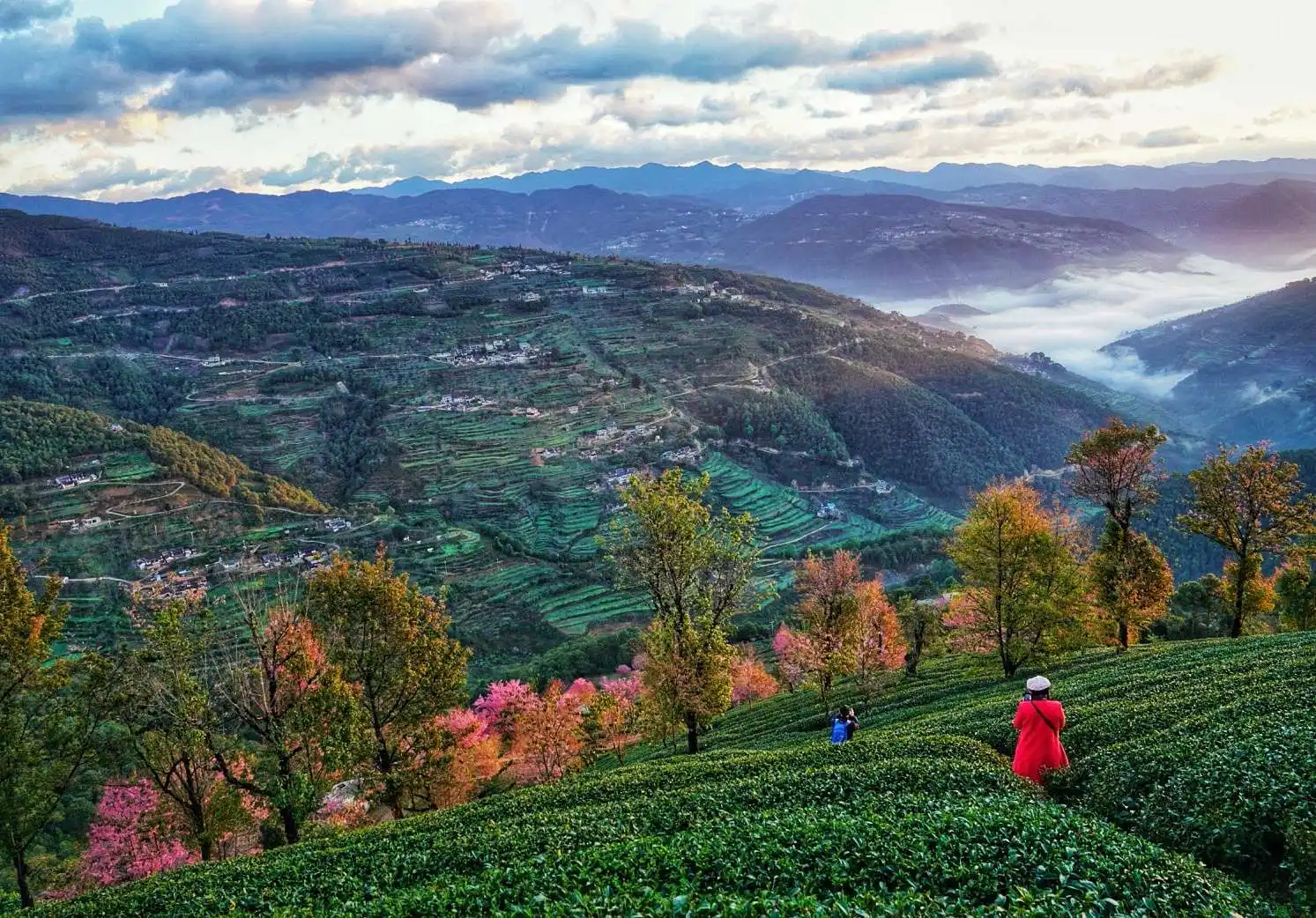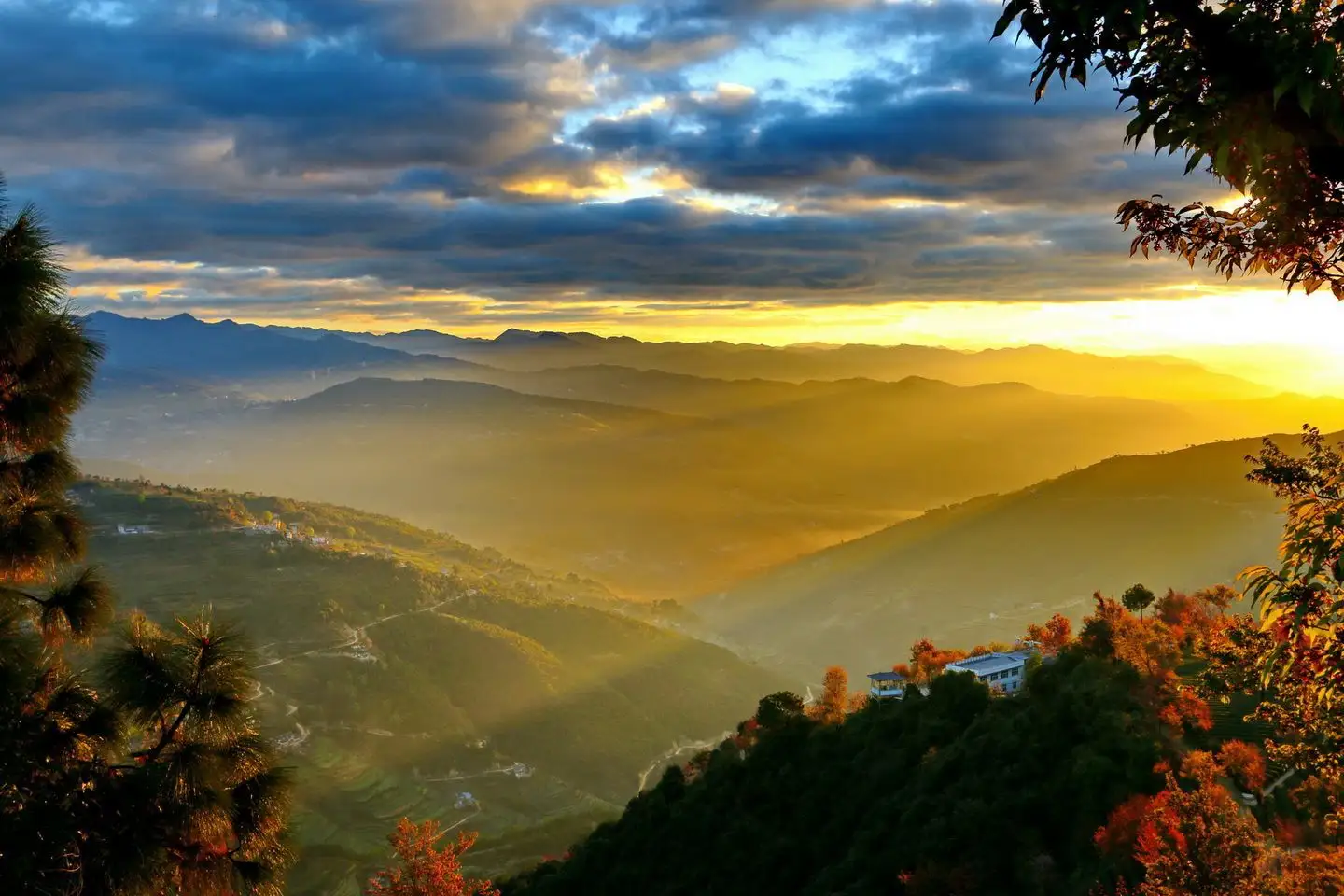
Wuliang Mountain Tea Garden in Dali and Puer, Yunnan
Wuliang Mountain ((云南无量山茶园)), formerly known as Mengle Mountain, has an average elevation of 1800 meters. Its name, meaning “soaring into the clouds and immeasurable in size,” reflects its towering and vast presence. Located in the western part of Jingdong Yi Autonomous County, Pu’er City, Yunnan Province, Wuliang Mountain runs from north to south. Its main ridge spans across Nanjian and Jingdong counties, while its subsidiary ridges extend from the source of Donggualin Tong River in Zhenyuan to Mengtong River, dividing into the eastern branch which passes through Zhenyuan, Jinggu, Ninger, Pu’er, and Jiangcheng all the way to the ancient Six Famous Tea Mountains in Xishuangbanna. The western branch includes Dachao Mountain in Jingdong, Zhentai Township and Anban Township on the west bank of Mengtong River in Zhenyuan, Jinggu Township, Minle Township, and Bi’an Township in Jinggu.
Wuliang Mountain is majestic and vast, stretching for miles with rugged terrain. Situated at the junction of the Hengduan Mountains and the Yunnan-Guizhou Plateau, it lies in the transitional zone from central to southern subtropical regions, creating a unique climate where “one mountain has four seasons, and every ten kilometers brings different weather.” This results in significant flavor variations among teas from different small peaks within Wuliang Mountain.
Rich in solar energy, abundant rainfall, fertile soil, and perennial fog, Wuliang Mountain hosts numerous ancient tea gardens. Its mild and humid climate, coupled with a long growing season for tea trees, enriches the tea leaves with abundant amino acids and moderate polyphenol content, imparting a characteristic taste of rich mellowness and enduring fragrance.
Tea Mountain History
Wuliang Mountain has a long history of tea cultivation. Mentioned in Tang Dynasty texts like “The Book of Southern Barbarians” by Fan Chuo, it describes tea being collected from various mountains near Yingsheng City, which is present-day Jingdong County, Pu’er City, where the main peak of Wuliang Mountain is located. During the Tang Dynasty, Yingsheng was an important trade and distribution center for the Nanzhao Kingdom.
“The Book of Southern Barbarians,” also known as “Yunnan Chronicle,” “Records of Southern Yunnan,” among others, is a 10-volume work, providing some of the earliest documented historical references to Pu’er tea in Yunnan. The ancient Yingsheng City was nestled among the vast Wuliang Mountains.
Legend has it that tea cultivation in Wuliang Mountain began during the Three Kingdoms period, with tea varieties and cultivation techniques passed down from Zhuge Liang during his southern campaigns. Throughout the Tang Dynasty and into the Nanzhao period, Wuliang Tea Mountain remained an important area for tea cultivation by the Yi people. By the Qing Dynasty, tea plantations in Wuliang Mountain covered over 100,000 mu (approximately 66,667 hectares), producing over 3,000 tons of dry tea annually. Besides local processing, tea was also shipped to Menghai, Yiwu, and other areas where it was compressed into various forms of Pu’er tea and exported overseas.
By the late Qing Dynasty and early Republican era, social upheavals, poor market conditions, and heavy taxes led to the gradual decline of the Jiangbei Six Famous Tea Mountains, while the Wuliang Mountain tea region in the Lancang River basin gradually became the center of Pu’er tea production. Its prominence grew as tea leaves were purchased, processed into various compressed teas, and sold to Tibet via Burma and India or to Southeast Asia via Burma and Thailand. Wuliang Mountain tea region flourished in the Ming and Qing dynasties, with bustling tea trade routes crowded with caravans, securing its position as an invaluable gem among Yunnan’s tea regions to this day.
Ancient Tea Tree Resources
Wuliang Mountain preserves many precious resources of ancient tea trees. In the early 1950s, numerous ancient tea trees with diameters exceeding 30 centimeters and heights of 3-5 meters were found growing in the Wuliang Mountain area. In December 1951, researchers from the Provincial Tea Research Institute, guided by local hunters, discovered a particularly notable ancient tea tree standing 5.5 meters tall with a base diameter of 1.38 meters. Despite its age, this tree was lush and dense, revered as the “Tea Tree King.”
By the mid-1980s, with the construction of roads leading to the ancient tea mountains where the Tea Tree King was located, a growing number of experts, scholars, and tourists visited Wuliang Mountain to witness the splendor of the Tea Tree King firsthand. News of the Tea Tree King spread across China, yet due to the difficult terrain, few ventured to visit it again. After comprehensive interdisciplinary research and analysis, it was conservatively estimated that the Tea Tree King was over 800 years old, belonging to the cultivated type of “Ancient Tea Tree King,” serving as a living testament to the earliest cultivation and utilization of tea trees by the Chinese people in human history.
With its pristine natural ecology and millennia-old mountain charm, Wuliang Mountain embodies a rich historical and cultural heritage, making it an increasingly captivating destination for tea enthusiasts around the world.













